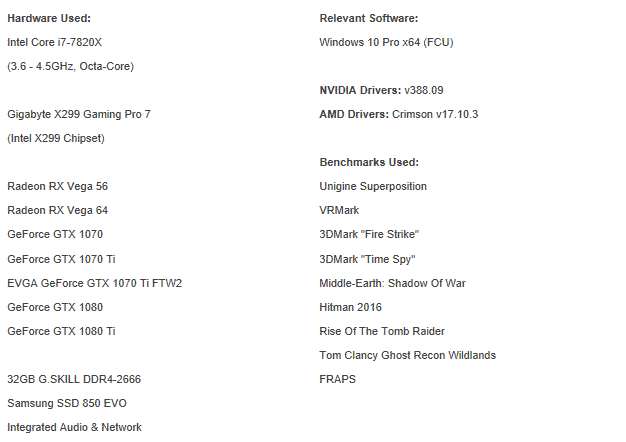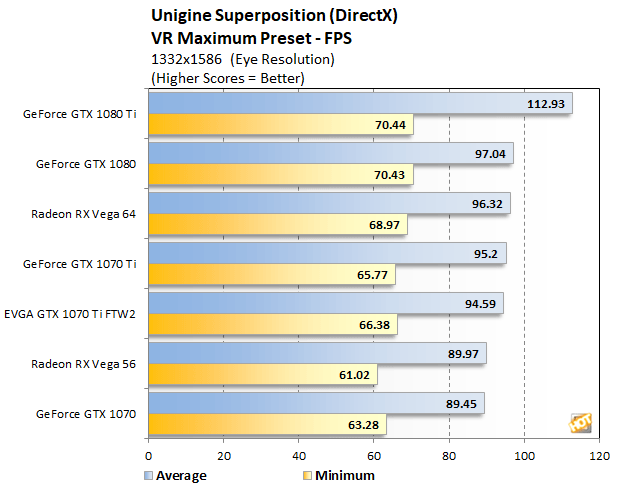NVIDIA GeForce GTX 1070 Ti Review: Gunning For Radeon RX Vega 56
How We Configured Our Test Systems: We tested the graphics cards in this article on a Gigabyte Aorus X299 Gaming 7 Pro motherboard powered by an Intel Core i7-7820X octal-core processor and 32GB of G.SKILL DDR4 RAM clocked at 2666MHz. The first thing we did when configuring the test system was enter the UEFI and set all values to their "high performance" default settings and disable any integrated peripherals that wouldn't be put to use. The memory's clock was manually dialed in, to ensure optimal memory performance at the processor's maximum supported speed of 2666MHz (without overclocking) and the solid state drive was then formatted and Windows 10 Professional x64 was installed and fully updated. When the Windows installation was complete, we installed all of the drivers, games, and benchmark tools necessary to complete our tests.
We should note that the AMD Radeon RX Vega cards were both tested with their default "Balanced" power modes. Power Saver (slower) and Turbo (faster) power modes are also available with those cards, which would affect performance, noise output, and peak power consumption.
|
|
|

|
|
|
Superposition is a new benchmark from Unigine, powered by the UNIGINE 2 Engine. It offers an array of benchmark modes, targeting gaming workloads as well as VR, with both DirectX and OpenGL code paths. There is an extreme hardware stability test built-in as well. Unigine Superposition uses the developer’s unique SSRTGI (Screen-Space Ray-Traced Global Illumination) dynamic lighting technology, along with high quality textures and models, to produce some stunning visuals. We ran Superposition in two modes using the DirectX code path – 1080p Extreme and VR Maximum -- to compare the performance of all graphics cards featured here.


The GeForce GTX 1070 Ti cards do a little better in the Superposition VR Maximum benchmark. Here, both cards had no trouble dispatching the AMD Radeon RX Vega 56 and just the missed the mark set by the more expensive Vega 64.
|
Futuremark’s VRMark is designed to test a PC’s readiness for the HTC Vive and Oculus Rift virtual reality headsets. The benchmark does not, however, require that one of the headsets is attached to the PC and it uses an in-house graphics engine and content to ensure comparable results between different platforms. We ran the "Orange Room" VRMark test at defaults settings here.

Futuremark VRMark












